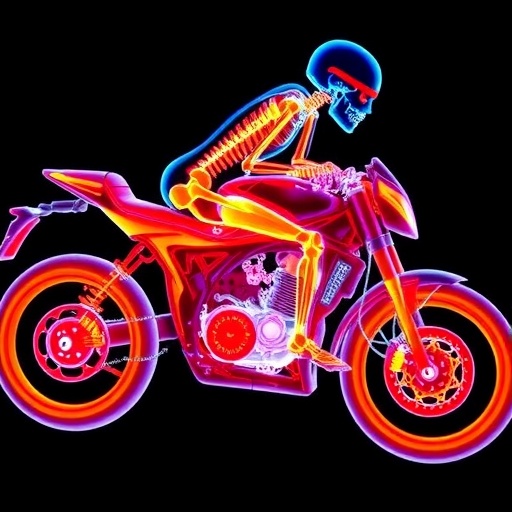Researchers at the University of Eastern Finland have discovered a novel mechanism safeguarding mitochondrial DNA. The study, published in PNAS earlier this week, was carried out in close collaboration with research groups from CBMSO in Madrid, Spain, and Umeå University in Sweden. A central part of the protective mechanism is an unusual enzyme, PrimPol, which can re-initiate mitochondrial DNA replication after damage.
Besides nuclear genomic DNA, mitochondria also contain their own small genomes, mitochondrial DNA (mtDNA), which encodes for thirteen essential parts of the cellular respiration machinery. mtDNA is especially vulnerable to oxidative damage as it is located close to the free radical producing mitochondrial electron transport chain. Cells protect their mitochondria by repairing mtDNA as well as constantly making new copies of it to replace the damaged molecules. Although cells are able to tolerate DNA damage, problems might arise when the DNA is replicated. Certain types of damage can stall the replication machinery before all of the genome has been replicated. This can result in double-strand breaks in DNA, resulting in the loss of partially replicated parts of the genome. In mitochondria this partial loss, or deletion, causes dysfunction of the cellular respiration and is the driving pathological mechanism behind many mitochondrial diseases but also responsible for aging associated decline of cell function.
Researchers were able to show that a primase enzyme PrimPol can generate a new primer adjacent to the damaged DNA sequence and re-initiate stalled replication in mitochondria. PrimPol itself is a highly unusual, structurally ancient primase, which can synthetize DNA primers in contrast to RNA primers synthetized by all other primases in our cells. Not only does the new study change our perceptions of PrimPol's functions, it also helps us to understand the basic mechanisms of mtDNA maintenance.
"As mtDNA often suffers collateral damage from cytostatins used during cancer treatment or antibiotics targeting bacteria, understanding of the repair mechanisms can help in developing these treatments," says Dr Jaakko Pohjoismäki from the University of Eastern Finland.
"Heart cells or cardiomyocytes are especially vulnerable to the loss of mitochondrial function, and enhanced protection of mtDNA could also shield diseased hearts," he continues.
###
For further information, please contact:
Dr Jaakko Pohjoismäki, University of Eastern Finland, email: jaakko.pohjoismaki(at)uef.fi, tel. +358 50 5744745
Dr Sjoerd Wanrooij, Umeå University, email: sjoerd.wanrooij(at)umu.se
Research article:
PrimPol is required for replication reinitiation after mtDNA damage.
Rubén Torregrosa-Muñumer, Josefin M. E. Forslund, Steffi Goffarta, Annika Pfeiffer, Gorazd Stojkovič, Gustavo Carvalho, Natalie Al-Furoukh, Luis Blanco, Sjoerd Wanrooij and Jaakko L. O. Pohjoismäki. PNAS. DOI 10.1073/pnas.1705367114
Media Contact
Jaakko Pohjoismäki
[email protected]
358-505-744-745
@UniEastFinland
http://www.uef.fi
http://dx.doi.org/10.1073/pnas.1705367114




